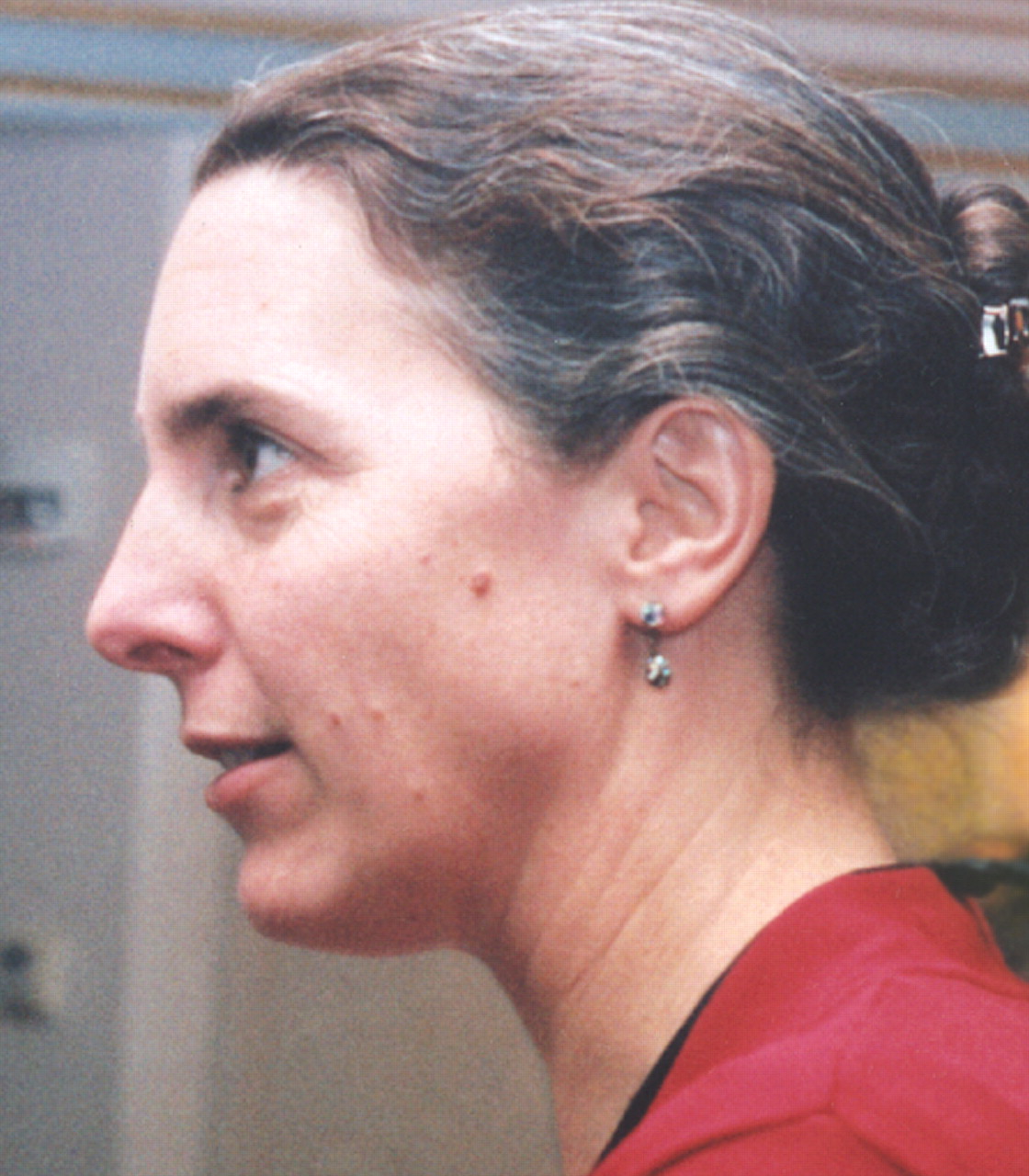Patient-Interaction Rules Not Clear-Cut, Residents Learn
Suppose you run into one of your patients in a restaurant or have to ride the subway every day with one of your psychotic patients. How do you handle such delicate situations?
Psychiatry residents at Harvard Medical School are tackling such questions in an unusual course. It is taught by Nina Calabresi, M.D., an instructor in psychiatry at Harvard Medical School and the director of the Patient/Psychiatry Course in the Harvard Longwood Psychiatry Residency Training Program, and by Randall Paulsen, M.D., an assistant professor of psychiatry at Harvard Medical School and president of the Boston Psychoanalytic Society and Institute.

Nina Calabresi, M.D.: “What is fascinating to me is how the same topics... are raised year after year by the residents.”
Credit: Joan Arehart-Treichel
The course's major goal is to help participants hone their abilities to solve problems stemming from the doctor-patient relationship. A minor goal is to help participants develop tolerance for professional diversity—that is, to realize that there is not just one way of solving difficult doctor-patient interactions.

Randall Paulsen, M.D.: “If learning occurs with affective engagement, it is much more desirable.”
Credit: Joan Arehart-Treichel
“When I introduce the course to residents, I tell them, 'I hope this is a place where you will bring your most challenging experiences,'” Calabresi reported at the winter meeting of the American Psychoanalytic Association in New York City.
And indeed, that is what they do.
One resident, for example, got a patient's consent to discuss the patient's case in ground rounds, but then worried about whether the patient really understood the impact of his case being revealed.
A second resident treated a patient in the emergency room for substance abuse and psychosis. The patient did not want his family to be contacted, and the resident respected his wish. Yet after the patient was hospitalized, his family was called in, and the resident was angry about this breach of confidentiality.
A third resident suspected that a patient was canceling appointments because the patient was being abused by her husband and was afraid that whatever she told the resident would get back to her husband. “I knew my task was to get her to see me again, but I never saw her again,” the resident said.
Still another feature of the course is that residents who sign up for it are obliged to take it during their second, third, and fourth years of residency. “What is fascinating to me is how the same topics—say, confidentiality, boundaries, transference, resistance—are raised year after year by the residents,” said Calabresi.
During the second and third year, participants tell other participants about some of their most challenging patient experiences, whereas during the fourth year, they write stories about such experiences, which are then read to their colleagues.
“We give them a time limit, so they have to write rather fast and not ruminate,” said Calabresi. “They are often surprised by what comes out.”
Certainly there are challenges in making such a course work, Paulsen and Calabresi concurred. For example, the instructor should serve as a facilitator, not as an expert. The group should hear how situations presented a few months earlier actually turn out so that they can learn from them. Sometimes participants so sharply disagree over how to handle situations that“ they get into [verbal] fights with each other,” Calabresi said. And occasionally they may even burst into tears when they are “at their wits' end about a difficult clinical case,” she added.
Teaching the course also has its rewards, Calabresi and Paulsen agreed. Residents learn more about each other; those who were originally antagonistic to each other often mellow. Residents may return several years later and report that they remember the course's content much better than what they learned in other classes.
“Yes, there is content learning as well as process learning in the course,” Paulsen stressed. “And learning about the doctor-patient relationship is so complex, so personal, and so emotional, that is why, I think, it can be best taught this way. Also, if learning occurs with affective engagement, it is much more desirable.”
In fact, Calabresi and Paulsen are so enthusiastic about the course, which they've taught for 15 years or so, that they would like to see it offered in other psychiatry residency programs as well.
The talk that Calabresi and Paulsen gave about their course is part of an ongoing discussion group at American Psychoanalytic Association meetings called “Conversations With Doctors: From Balint Groups to Narrative Medicine.” According to co-chair Fred Griffin, M.D., of Birmingham, Ala., this discussion group “focuses on listening for stories that patients tell about their lives and on becoming better attuned to the subjective responses of physicians to their patients.” ▪



